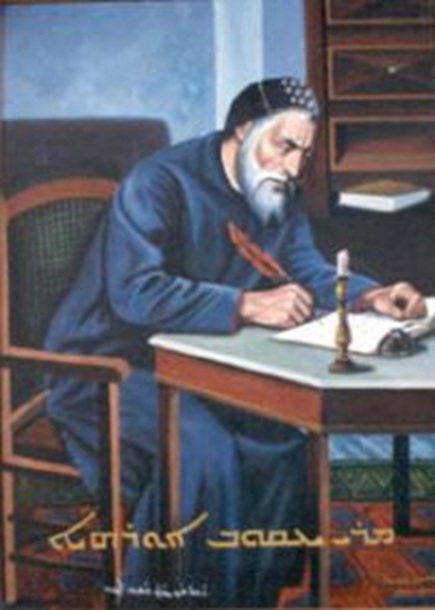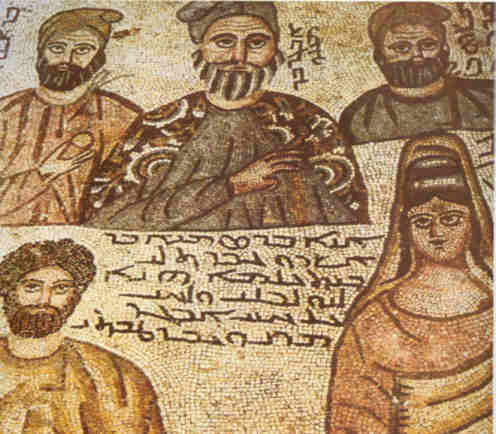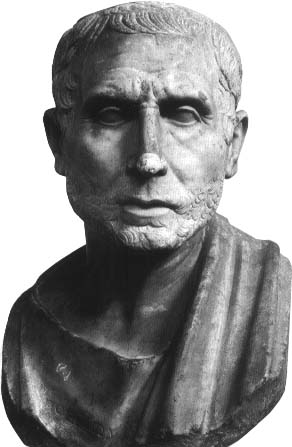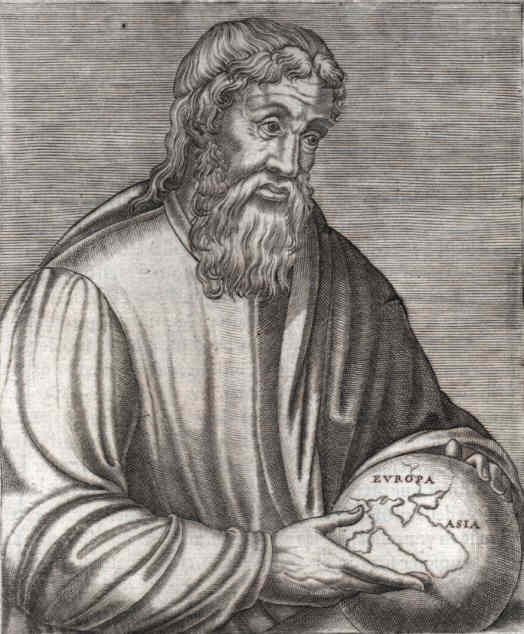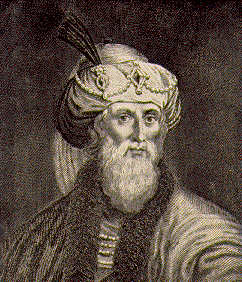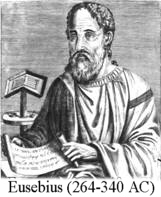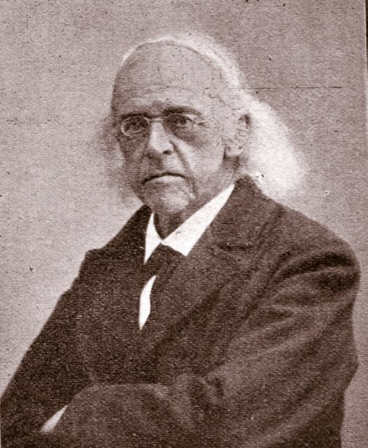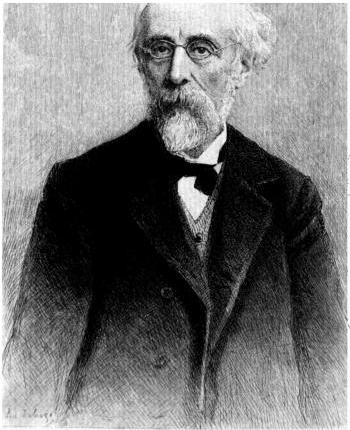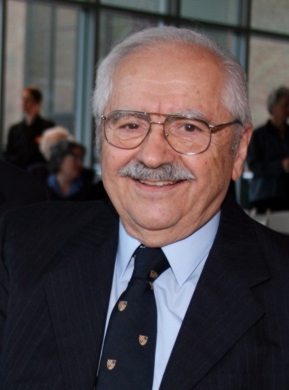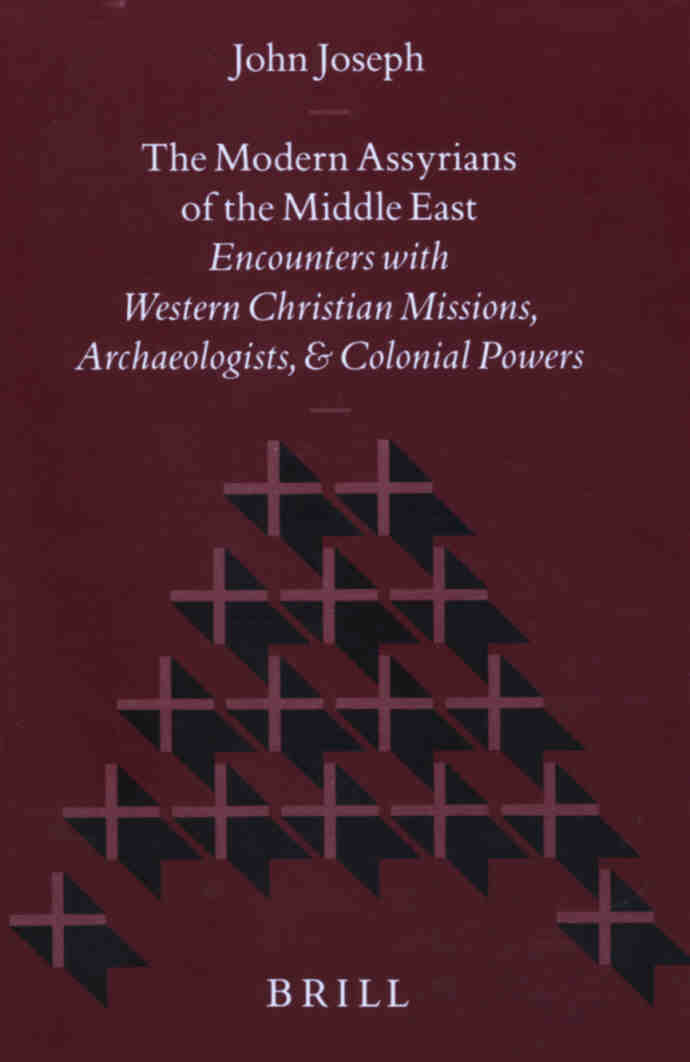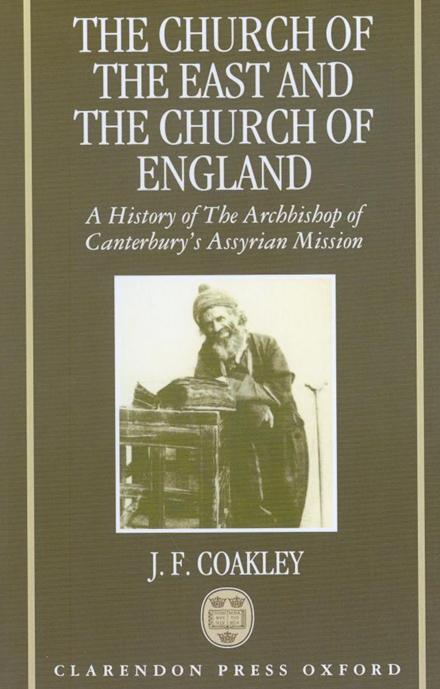|
Jacob of Urhoy (Urfa)
Who made the East- Aramean Nestorians known as "Assyrians"?
SUA/WCA and allowing terrorism
Aramean history, history, culture and language, a six partite interview
26-6-2007: Aram Nahrin: the Aramaeans, the Bible, Christianity, and the West
27-6-2007: Aramaic: the Millennia Long Trajectory of the Global Language
28-6-2007: Gabriel Sengo opens the Gates of Aramaean Thought, Culture and Wisdom
2-7-2007: Do not Call the Illustrious Nation of Aramaeans by the Misnomer 'Assyrians'!
2-7-2007: Extermination of the Aramaean Nation: Results of an Anglo – French Plan
(Photo: wikipedia.org) The Historian Poseidonios from Apamea (ca. 135 BC - 51 BC), was a Greek Stoic philosopher, politician, astronomer, geographer, historian, and teacher. He says: " "The people we Greek call Syrians, they call themselves Arameans" From: See J.G. Kidd, Posidonius (Cambridge Classical Texts and Commentaries, 1988), vol. 2, pt. 2, pp. 955-956)
(Photo: wikipedia.org) Strabo (born 63 BC or 64 BC, died ca. 24 AD), a Greek historian, geographer and philosopher is mostly famous for his Geographika ("Geography") He says: "Poseidonius conjectures that the names of these nations also are akin; for, says he, the people whom we call Syrians are by the Syrians themselves called Arameans." (From: The Geography of Strabo, translated by Horace Leonard Jones and published in Vol. I of the Loeb Classical Library edition, 1917, Book I, Chapt. 2, 34)
(Photo: http://www.ccel.org) Flavius Josephus (c. 37 – c. 100 AD (or CE)) was a 1st century Jewish historian and apologist of priestly and royal ancestry who survived and recorded the Destruction of Jerusalem in 70 and later settled in Rome. He says: ""Aram had the Arameans, which the Greeks called Syrians."" (From: Antiquities of the Jews, translated by William Whiston in 1737, Book I, Chapt. 6)
Eusebius of Caesarea (c. 275 – May 30, 339), was a bishop of Caesarea in Palestine and is often referred to as the father of church history because of his work in recording the history of the early Christian church. He says: ""and from Aram the Arameans, which are also called Syrians" (From: Sebastian Brock, "Eusebius and Syriac Christianity," in Harold W. Attridge and Gohei Hata, eds., Eusebius, Christianity, and Judaism (Leiden 1992), p. 226)
Abu Al-husayn 'ali Ibn Al-husayn Al-mas'udi, born 895 in Baghdad [Iraq] and died 957 in al- Fustat [Egypt], was a historian and traveler, known as "the Herodotus of the Arabs.” He was the first Arab to combine history and scientific geography in a large-scale work. On Tur Abdin he says: "Tur Abdin is the mountain where remnants of the Aramean Syrians still survive." (From: Michael Jan de Goeje: Bibliotheca Geographorum Arabicorum III, Leiden 1906, 54, I)
Prof. Dietrich Hermann Hegewisch born Dec. 15, 1746 in Quakenbrück [Germany] and died April 4, 1812 in Kiel, was a prolific german historian at the University of Kiel with a wide span of interests. He says: "Do not the Syrians, as they are usually called, or the Arameans, as they in fact are termed, deserve more attention in world history than they are usually given?" (From: D.H. Hegewisch: Die Aramäer oder Syrer; ein kleiner Beitrag zur allgemeinen Weltgeschichte, Berlinische Monatschrift, 2, 1794, p. 193)
On Page 197 he says: "The names Syria, Assyria, Mesopotamia, Babylon, etc. stem from the Greeks, who were not familiar with the true geography of these lands when the names first started to be used. Later, partly because of continuing ignorance and partly because of convenience despite having accurate knowledge, they persisted in using them since it would have required something of an effort to give up the old, familiar names and divisions of the countries and switch to the new ones, even if they were more accurate. The old, true, and single name of these lands is Aram; it is mentioned numerous times in the Bible of the Old Testament, and Greek scholars were also familiar with it and probably described the population of these areas as Arameans, though seldom, as they usually continued to use the term Syrian, which had been familiar to the Greeks."
On page 307 he says: "The Syrians or Arameans were not merely a numerous and large people, they were also a much cultivated people."
(Photo: http://portrait.kaar.at) Prof. Theodor Mommsen born Nov. 30, 1817, Garding, Schleswig [now in Germany] died Nov. 1, 1903, Charlottenburg, near Berlin, was a German historian and writer, famous for his masterpiece about the History of Rome. He received the Nobel Prize in Literature in 1902. He says: "the history of the Aramaean or Syrian nation which occupied the east coast and extended into the interior of Asia as far as the Euphrates and Tigris" (From: The History of Rome, written between 1854 and 1856, Leipzig, by Theodor Mommsen, Book First, Chapter One) "the Arameans defended their nationality with the weapons of intellect as well as with their blood against all the allurements of Greek civilization and all the coercive measures of eastern and western despots, and that with an obstinacy which no Indo- Germanic people has ever equalled, and which to us who are Occidentals seems to be sometimes more, sometimes less, than human." (ibid, Book Third, Chapter One)
(Photo: wikipedia.org) Prof. Theodor Nöldeke born March 2, 1836 in Harburg near Hamburg, died December 25, 1930 in Karlsruhe, was the leading german semitic scholar, who studied at Göttingen, Vienna, Leiden and Berlin. He says: "The main body of the population of all these wide landscapes from the Mediterranean Sea to beyond the Tigris belonged to a certain nationality, that of the Arameans." (From: Th. Nöldeke: Assyrios Syrios Syros, in Zeitschrift für klassische Philologie, Hermes 5, Berlin 1871, p. 460)
On page 461 he says: "It is well understandable that people have started to transfer the name of the country to the most important nationality and so the name 'syrian' was apprehended ethnological and was equated with 'aramaic'."
On page 468 he says: "Since the times of Alexander [the Great], if not already somewhat earlier, people have started to transfer the name of the Syrians exclusively over the prevailing in Syria nationality, and in this way this originally political-geographical term became an ethnological one that was identified with the local Arameans."
"From the time the Greeks came to have a more intimate acquaintance with Asia, they designated by the name of Syrians, the people who called themselves ´Arameans’.” (From: Th. Nöldeke, Kurzgefasste Syrische Grammatik (Leipzig, 1880), p. XXIX)
"Regarding the name of this nation and its language is the original 'Aramean’ in essence also the only one [sic], that for the employment of the present-day scholarship as yet strongly fits.” (From: Th. Nöldeke, "Die Namen der aramäischen Nation und Sprache,” in Zeitschrift der Deutschen Morgenländischen Gesellschaft 25 (1871), p. 131)
(Photo: www.doaks.org) Karl Eduard Sachau born 20 July 1845 and died 1930 was a German orientalist. He was 1872 professor at the University of Vienna, and in 1876, professor at the University of Berlin, where he was appointed director of the new Seminar of Oriental languages in 1887. He is especially noteworthy for his work on Syriac and other Aramaic dialects. He says: "The nation of the Arameans: This national name later, mainly in consequence of Jewish-Christian literature influences, gave way to the Greek designation Syrians." (From: Verzeichnis der Syrischen Handschriften der königlichen Bibliothek zu Berlin von Eduard Sachau 1. Abteilung, Berlin 1899, Vorrede I)
|
Aramean people: Aramean people (not to be confused with ‘Armenians’) speak Aramaic, the language spoken by Abraham, Moses and Jesus. They are the indigenous people of what was called in ancient times Aram- Nahrin, in our days it is called ‘Mesopotamia’. Some Arameans today identify themselves with “Assyrians”, because of the spiritual colonial hate generating activities of the Western missionaries and diplomats in the Middle-East in 16th and 19th centuries. Other Arameans became known as “Chaldeans”. However all of them are Arameans.In Turkey, the Arameans are called: Süryani. In Arabic they are called Al- Suryan.
The
Aramaeans' rise will transfigure the Middle Eastern Chessboard Most people allover the world ignore the basic fact that is at the epicenter of most of the problems and thorny issues we attest in the Middle East, at least its Asiatic, so-called 'Arabic – speaking' part. This fact has to do with the real ethnic - historical identity of the people who live in Iraq, Syria, Lebanon, Israel, Palestine, Jordan, Kuwait, Emirates and Qatar. At this initial point, we specify that we do not refer to the Jewish Israelis, to the Kurds of Iraq and Syria, or to the Armenian Diaspora. We focalize on the Arabic speaking people, who live in the aforementioned countries. To them we add the Arabic speaking people, who live in some parts of South-Eastern Turkey (Hatay, Urfa, Cizre) and in the province Khuzestan of Iran.
By Prof. Dr. Muhammad Shamsaddin Megalommatis, Orientalist (http://www.buzzle.com/editorials/8-9-2005-74536.asp?viewPage=5) The basic fact is that all these populations are only Arabic – speaking; they are not Arabs. Their ethnic historical identity is Aramaic. Aramaeans are Semitic, but as distant from the Arabs as the Ancient Hebrews were from the Babylonians. For reasons we are going to explain, these Aramaean populations got gradually arabized, but the arabization phenomenon took place at the linguistic level only, not at the ethnic, national, cultural levels. Taking into consideration this fact, we understand easily that only grave problems may result from an abnormal and preposterous situation in which (as it occurred over the past two centuries) a people becomes the standard-bearer of the nationalism of another! To what extent could it be considered as normal for the Germans to become the paragons of the French nationalism? Language does not imply Culture, and even more so language does not entail ethnic – national identity. To what extent an English native speaker, who happens to be an African American, let's say a Black US citizen, could pretend to be of … Anglo-Saxon origin, and therefore to be properly entitled to express ideas and ideologies pertaining to Anglo-Saxon nationalism? Arabic – speaking people are Aramaeans, not Arabs. In the same way African Americans are not Anglo-Saxons, although English is their native tongue, Arabic – speaking Aramaeans throughout the Asiatic Middle East cannot be considered as Arabs, although Arabic is their native tongue. Of course, this historical reality is known to the great majority of the people in the area; however, it is not properly assessed and reflected at the level of national political discourses, political debates, academic conferences, and intellectual life. The reason for this is the diffusion of colonial culture and education, and the ensuing Arab nationalism (and the Pan-Arabism) which is a purely colonial product geared to diffuse historical confusion, to cause ethnic identity loss, and to end up in absolute national disorientation after the colonial administrations (France and England) moved away. The Colonial Anti-Aramaic Scheme One should not take this as a unique case; Egyptians, Berbers and others became the victims of colonial falsified versions of history or anti-historical ideologies and totalitarian dogmas. To analyze the colonial scheme against the Aramaeans, one should examine the various reasons and the historical geo-strategic data. In their fight against the Ottoman Empire and the Safevid Empire of Iran, the Christian European powers, France, England, Holland, Portugal and Spain, tried first to manipulate and to instrumentalize the Christian populations that lived in the vast area of the two Islamic countries. They used Vatican and the Pope up to the extent there were common interests. When we examine historical situations going back to the middle of the 16th century, we must bear in mind that something like that was not quite easy, because the Oriental Christians, Orthodox, 'Monophysitic' and 'Nestorian' had not forgotten the cruelty of the Crusaders, who were then a relatively recent but absolutely abominable memory. Being oblivious of the anti-Christian cruelty of the Catholic Crusaders, one is led to total misunderstanding of the History of the Middle East. However, the Western powers had some early success among the Nestorians, who spoke Eastern Syriac, a late Aramaic language. The Western success meant of course total collapse of that Christian denomination, involving schism, fratricide conflicts, and religious apostasy (before those days, the Nestorians had not used icons at all). It is therefore clear that the Anti-Aramaic scheme started even before Napoleon's expedition to Egypt, and signified sheer deterioration of the religious division with the same people. When the colonial scheme of total dismemberment of the Ottoman Empire was conceived, it was clear to the Western diplomatic and academic plotters that, if the Turkish and Greek speaking populations had to be left apart in the area of today's Turkey, and the Kurds should be delineated in the surrounding mountains that bordered with Iran, the rest of the Asiatic dominions of the Sublime Porte were inhabited mostly by Aramaeans; the only exceptions in that vast area were the Yemenites who lived in Yemen, and the Arabs who lived in Arabia, i.e. the Nafd desert and Hedjaz, the mountainous area of the Arabian peninsula in the north of Yemen and in the south of the Gulf of Akaba, between the desert and the Red Sea. Through the diffusion of nationalisms, France intended to create a completely different world than that of the Medieval Europe and the Islamic - Ottoman Middle East, and the ensuing multi-division would serve the interests of the colonial powers, either militarily and administratively present or not. However, multi-division would be only one means! Colonially exported nationalisms and academic disciplines could vary tremendously according to the locally specific interests of the colonizing power. In Greece, the colonial falsehood signified an amalgamation of various ethnic groups, Albanians, Vlachians and Slavs, plus a fake identification with the Ancient Greeks, which was intensified following an increased interest for the Pre-Christian Antiquity. In this case, differences among various elements were under-accentuated. In Egypt, the colonial falsehood heralded a lack of interest for the Antiquity, an under-evaluation of the Coptic character of the country, and a focus on the Arabic language in view of the Arab nationalism, the fake identification that was under fabrication. In Aram Nahrain, as is the correct name of all the lands between Turkey, Iran, the Arabic desert ant the Mediterranean, the colonial falsehood was geared to generate a lack of interest for the Pre-Christian and Christian Antiquity, to deteriorate the religious divisions, and to lead to the fake identification. In this case, differences among various elements were over-accentuated. It was obviously necessary for France and England that, when the short perspective of their military and administrative presence would end in the Asiatic parts of the Ottoman Empire, the local people do not have any idea of identity, any perception of their homogeneity, any chance of political union. So, the differences were stressed among 'Nestorian' Christian Aramaeans, who were deadlocked in their schism (due to their attitude to the Pope); the divergence among the various 'Monophysitic', Orthodox and Catholic Aramaeans increased. Every effort was undertaken to dissociate Christian Aramaeans from Muslim (Shia or Sunni) Aramaeans, so that the latter be more easily exposed to the sort of Pan-Arabic falsehood and fake identity French 'academia' prepared for them during the 19th century. It was obvious that, if after the end of the forthcoming colonial administration, all the populations living in the area of today's Syria, Lebanon, Palestine, Israel, Iraq, Jordan, Kuwait, Qatar, and Emirates had a proper national identity perception and feeling, one country would be formed in all this area (instead of 9!), and this country - having a correct national historical identity - would be difficult to maneuver and manipulate. Parallel colonial machinations against the Aramaeans So, several attitudes were pursued in parallel by the colonial powers; first, the Muslim Aramaeans were left to be gradually pulled by the rising bogus-Arab identity and nationalism, up to the point of being driven to complete oblivion of their Aramaic identity. Second, the Christian Aramaeans were further misled through the false nationalistic use of historical terms like 'Assyrians' and 'Chaldaeans'. The name of Assyria was used in various languages after the collapse of the Assyrian Empire, but it was always an academic use of an erudite attitude. There were no more Assyrians in Assyria after the collapse of Nineveh and Assyria (614 – 612 – 609 BCE), and there was not a single Assyrian text written ever since. The area of Assyria became the epicenter of the Jewish kingdom of Adiabene at the Parthian Arsacid times, and later on it hosted numerous Christian populations, mostly Nestorians who faced persecutions within both, the Roman Empire (there they were thought to be heretic) and the Sassanid Empire of Iran (there they were erroneously viewed as Roman Fifth Phalange). The use of the name of Assyria by the Christian Church does not imply that the Nestorian believers and followers of the Church were … Assyrians! It was an erudite academic and rather honorific usage. Out of it, colonial missionaries, political agents, and diplomats made a huge lie (namely that these Aramaeans are not Aramaeans but 'Assyrians') with which they disconnected the Nestorian Aramaeans from their Aramaic identity. Third, and at that point the religious multi-division played a role, and pro-Vatican 'assyrian' Aramaeans 'opted' for another false national name, 'Chaldaeans'. Quite ironically, modern scholarship reconstructed the historical reality that the Ancient Kaldu of the Assyrian – Babylonian sources (term that was altered to Chaldaeans in Greek) were just one Aramaic tribe! So, these Aramaeans, who want to call themselves 'Chaldaeans', are like some French, who would suggest calling France 'Burgundy'! Fourth, the entire Orientalist establishment of all countries involved in these sectors of the Humanities proved to be unable to compile one – just one (1)! – Paperback volume of Concise History of the Aramaic Nation that would be an all-encompassing Ark of Aramaic identity. The linguistic arabization of the Aramaeans; Arabic is derived from Syriac Aramaic We return here to the initial point, according to which the ethnic historical identity of the Arabic speaking people in Asia (encompassing provinces of Turkey and Iran, as well as the following countries: Kuwait, Iraq, Syria, Lebanon, Israel, Palestine, Jordan, Qatar and Emirates) is Aramaic. The historical truth is as simple as that: Aramaeans, who accepted Islam in various moments over the past 14 centuries, gradually abandoned Aramaic and spoke Arabic. The similarity of the two languages and scriptures played a certain role in this regard, facilitating this shift. Arabic scripture has derived from a late Aramaic scripture that is called Syriac. Syriac is written in various calligraphic ways, and one of these ways was chosen to write pre-Coranic Arabic approximately 300 years before Prophet Muhammad was born. This historical truth is taught in all the academic establishments of the West, but does not please the fanatic and extremist sheikhs of Hatred, for whom Arabic was the original writing from which all the rest derived. This is completely irrelevant of course, but the extremist sheikhs have to support such 'ideas' since they follow an erroneous interpretation of some Coranic verses. We mention this point here only to show the colonial responsibility for the extremist bogus-Islam. If the Aramaic History were the object of correct and pertinent search for and diffusion of knowledge, if the Aramaeans were permitted to have access to a true historical identity that would bring the Christian and the Muslim Aramaeans together, if the falsehood of Pan-Arabism were not propagated among the Arabic – speaking Aramaeans, if educational efforts of Aramaization were undertaken in an adequate way, then the falsehood of Pan-Arabism would not rise and merge with the most erroneous Islamic beliefs to produce another mistaken 'topos' of the Islamic Extremism. We want here to remind that the aforementioned wrong interpretation of Coranic verses that leads to the aberrational conclusion that Arabic was the oldest language and writing in the world did not prevail in the Ages of Great Islamic Culture and Science, and highly erudite scholars in Baghdad, Andalusia, Ispahan, Istanbul and Samarqand did not believe such idiocies. And to close this point, we stress that it is essential to understand that the Islamic Terrorism is mainly a system of beliefs, which means a certain number of points (ideas, beliefs). The responsibility for the Islamic Terrorism lies on those who helped form these points into a system. The linguistic arabization of the Aramaeans; all the Arab population at the times of Prophet Muhammad did not outnumber the inhabitants of just one Aramaean city like Damascus, Nisibis, Ctesiphon, Dura Europos, Palmyra, Homs, or Edessa. The linguistic arabization of the Aramaeans was an exclusively linguistic phenomenon. There was no racial – ethnic dimension to it. By this, we do not imply that there were no intermingling, mixed marriages, and amalgamation of races. But certainly this was a very marginal phenomenon that did not make of the population a mixed, let's say Aramaeo-Arabic, populace. The reasons this phenomenon was marginal at the racial - ethnic level are very simple; the Arabs at the times of the Prophet Muhammad were few in number. We have extreme details about the participants of meetings and gatherings, about the warriors in various battles, about the population of villages and towns. And we have an estimate about parts of the Roman and the Iranian empires where the Aramaeans lived. We can safely claim that the entire Arabic population (that before Prophet Muhammad preached Islam lived exclusively in the Nafd desert and in Hedjaz) did not outnumber the inhabitants of just one Aramaean city like Damascus, Nisibis, Ctesiphon, Dura Europos, Palmyra, Homs, or Edessa. In addition, a very common mistake for Western historians of the Islamic Caliphates is to take the number of fighters in later battles and invasions as an indication of Arabic population. This is an aberration. Those who attacked Constantinople fighting under the flags of Muawiyah in 674 – 677 were not Arabs, but in a small part of them. The outright majority (more than 80% of that army) was formed by Aramaeans, Yemenites, Egyptians, Africans (Libyans, Berbers, Abyssinians) Persians, and Greek-speaking populations of the Eastern Roman Empire, who had adhered to Islam during the period 630 (preaching of Ali in Yemen) – 674. The proper reconstitution of the History of the Middle East and the rise of the Aramaic National Identity will be instrumental in bringing the bogus-Islamic terror to a dead end, and in liberating large populations from the falsehood of Pan-Arabism that caused misery, barbarism and death to the divided parts of the Illustrious Nation of the Aramaeans.
Copyright © Aram-Naharaim Organisation
|
Letters to governments and international institutions
Aramean Spiritual/ Physical Genocide
Fake News on the Aramean nation:
Professor Dr. John Joseph. 5-7-2008: Assyria and Syria: Synonyms?
In a letter to the author (John Joseph), dated June 11, 1997, Patricia Crone wrote that she and Cook “do not argue that the Nestorians of pre-Islamic Iraq saw themselves as Assyrians or that this is what they called themselves. They called themselves Suryane, which had no greater connotation of Assyrian in their usage than it did in anyone else…. We take it for granted that they got the modern Assyrian label from the West and proceeded to reinvent themselves… Of course the Nestorians were Arameans.” (Page 27, footnote 94)
Professor Dr. Muhammad Shamsaddin Megalommatis 28-6-2004: Progenitor of Wars and Tyrannies: the Falsehood of Pan-Arabism
10-8-2005: The Aramaeans' rise will transfigure the Middle Eastern Chessboard
18-12-2008: Syriacs, "Assyrians" and "Chaldaeans" are all Aramaeans
16-12-2008: Pseudo-Assyrians, Pseudo-Chaldaeans, and the Cultural – National Needs of the Aramaean Nation
Patriarch Emmanuel III Delly
13-5-2006: Is there an Assyrian cause in Iraqi Kurdistan?
2-8-2005: IRAQ's Modern History. The Arab Majority and The Minorities
“The Church of the East and the Church of England: A History of the Archbishop of Canterbury's Assyrian Mission “ is the title of the book written by J.F. Coakley and published in 1992.
On page 147 Coackly reports about a dispute between Arthur Maclean, head of the Archbishop of Canterbury's Assyrian Mission from 1886 to 1891, and Hormuzed Rassam, the brother of Christian Antun (Isa) Rassam; a Chaldean family from Mosul. We read: “As he (Maclean) insisted, the ‘Syrians’ called themselves that, never ‘Assyrians’; …… to apply the name ‘Assyrians’ to these Eastern Syrian Christians appears to me either an error, or else pedantry. There is really as far as I know no proof that they had any connection with the Old Assyrians. ....... ..... Why should we invent a name when we have such a very convenient one, used for centuries, at our hand? I can understand that one living close to the ruins of Nineve should have a fit enthusiasm of Old Assyria; but is it common sense to cast aside a name used by the people themselves, and to invent another for them of very doubtful applicability? “
|
